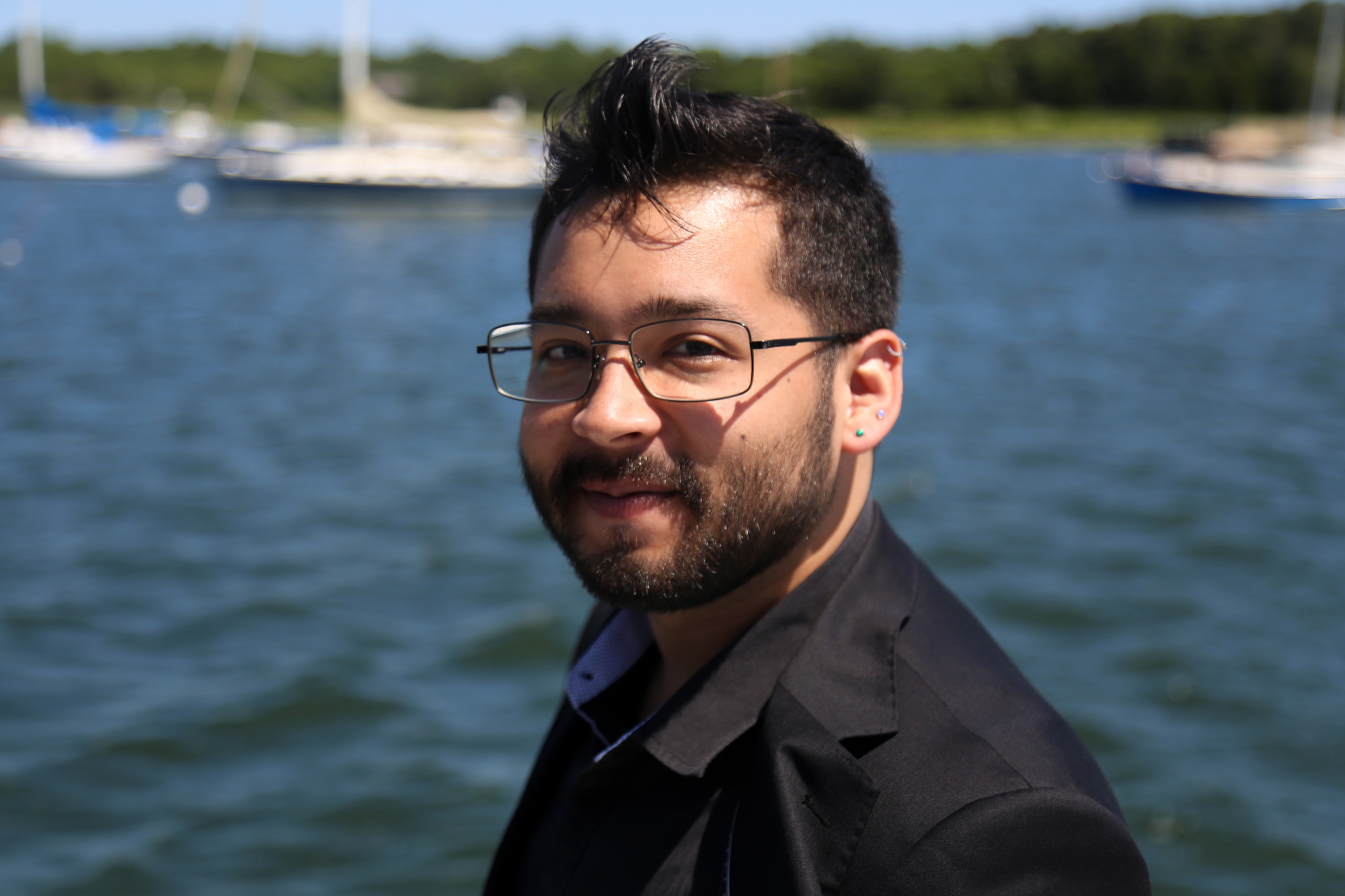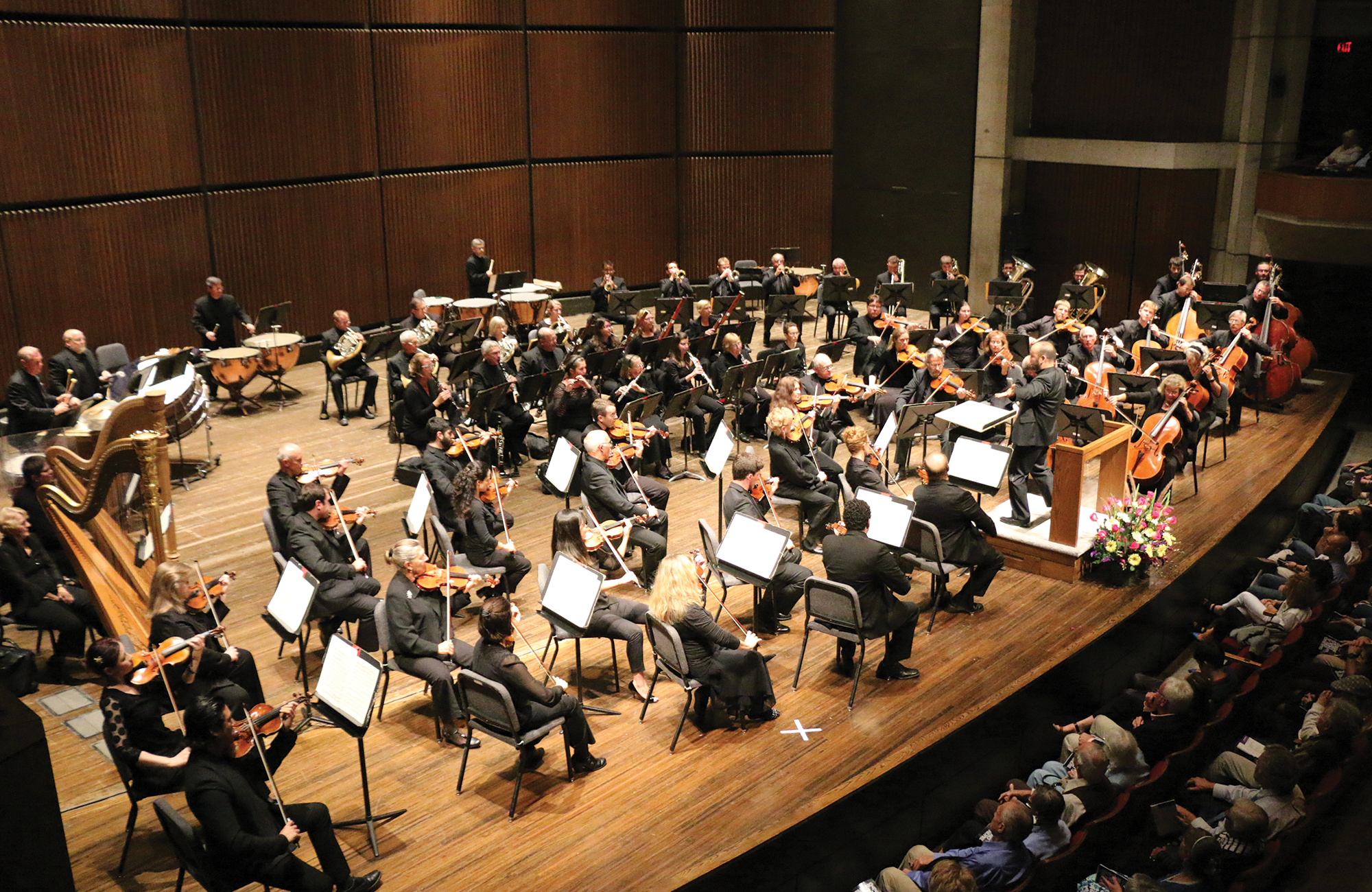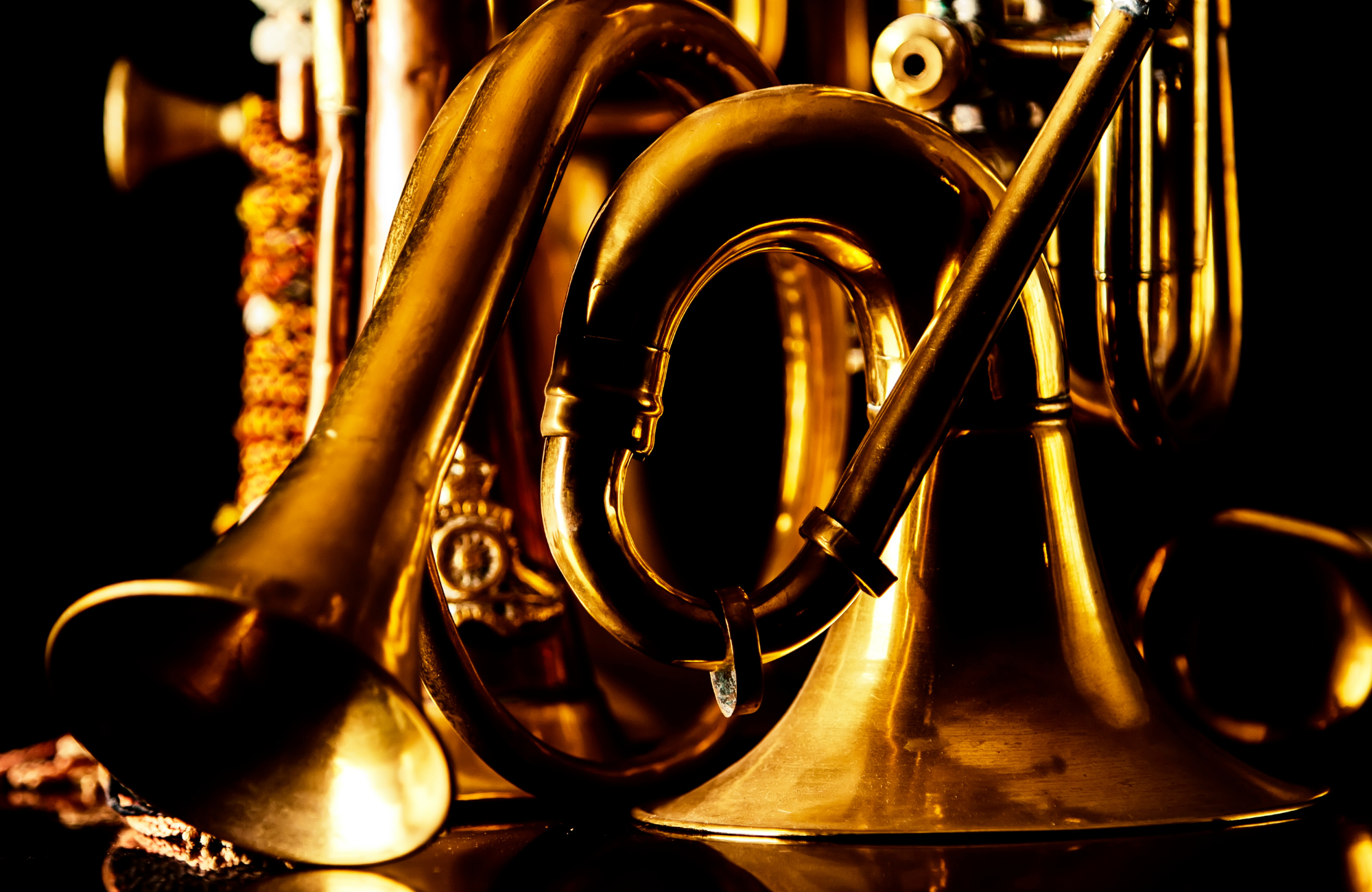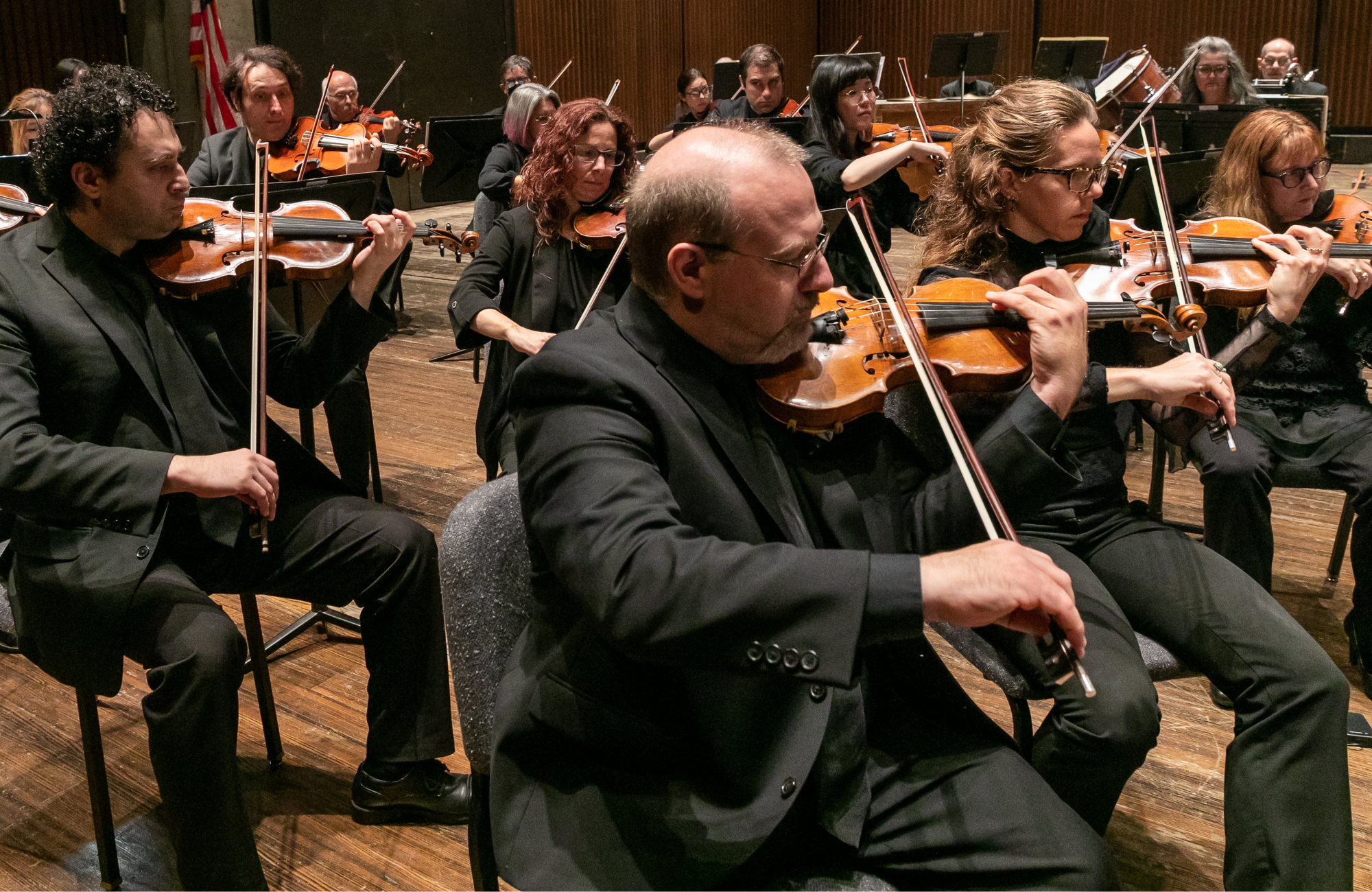Symphoria’s Casual Series begins with the charming Midsummer Night’s Dream Overture by Felix Mendelssohn. Symphoria musicians Sonya Stith Williams and Eduardo Sepúlveda perform J.S. Bach’s Concerto for Violin and Oboe, and the beautiful Symphony No. 3 by Louise Farrenc rounds out the concert.
Please read our COVID policies here
Please Note: Seating at Inspiration Hall may be limited due to Covid-19 restrictions, and if restrictions are in place at the time of the concert, we will make every effort to accommodate all patrons. If we are unable to accommodate in person attendance, patrons may be offered an alternate concert date, or a livestream option.
PROGRAM
MENDELSSOHN: Midsummernight’s Dream, “Overture”, Opus 61 ![]()
BACH: Concerto in C minor for Oboe, Violin, and String Orchestra, BWV 1060 ![]()
FARRENC: Symphony No. 3 in G minor, Op. 36 ![]()
This is Part 1 of a two-part video series: a fun introduction to the main musical themes in Mendelssohn’s Overture to “A Midsummer Night’s Dream,” describing how those themes connect with Shakespeare’s play.
This is Part 2 of a two-part video series: a “deeper dive” into Mendelssohn’s Overture to “A Midsummer Night’s Dream,” using cool, original diagrams and silly video clips to reveal Mendelssohn’s use of Sonata Form.
PROGRAM NOTES
We often have a sense that the canon, at least for the 18th and 19th centuries, is fairly stable—a sense magnified during last year’s Beethoven celebrations, which reminded us that he’s been central to the repertoire for two hundred years. But the three composers on today’s program suggest something more complex. A reputation can be, as the Gershwins might have said, a sometime thing.
Granted, Felix Mendelssohn (1809–1847), enormously successful during his life, has remained a concert favorite ever since. He was a prodigy who developed his mature style quickly; and until his early ...
We often have a sense that the canon, at least for the 18th and 19th centuries, is fairly stable—a sense magnified during last year’s Beethoven celebrations, which reminded us that he’s been central to the repertoire for two hundred years. But the three composers on today’s program suggest something more complex. A reputation can be, as the Gershwins might have said, a sometime thing.
Granted, Felix Mendelssohn (1809–1847), enormously successful during his life, has remained a concert favorite ever since. He was a prodigy who developed his mature style quickly; and until his early death, he led a life without serious professional obstacles. Although he was born as the Romantic period was starting (just over a month after Beethoven had given the Classical period a fatal kick with his Fifth Symphony), he shunned the revolutionary path of his contemporary Liszt. Rather, his music honors poise over ferment; and while it can be affecting, it is rarely wrenching.
Given his stylistic preferences, it’s hardly surprising that Mendelssohn’s incidental music for A Midsummer Night’s Dream (Shakespeare at his most whimsical) is more memorable than the music he penned for tragedies by Sophocles and Racine. It may be surprising, though, to learn that he composed the Midsummer Night’s Dream Overture while still a teen in 1826 (the rest of the score came later): Not even Mozart wrote anything quite so accomplished at that age. Accomplished—and pictorial: From the opening woodwind chords—a musical “once upon a time”—Mendelssohn evokes a world of magic and enchantment. You can easily hear the fairies in the scurrying strings that soon appear, for instance, or in the braying that represents Bottom turning into an ass or the hunting music in the horns, all set forth with what conductor Larry Loh calls a “pristine, light, and effervescent texture”—and perfect formal balance. (For a fuller analysis of the overture, see the video created by principal clarinetist Allan Kolsky, posted on the Symphoria website.)
Surely, Johann Sebastian Bach (1685–1750) has been an even more stable pillar of high Western musical culture than Mendelssohn? Not exactly. Although he was revered by other composers, early listeners found his music dry. In fact, it was Mendelssohn himself who helped lead the way to establishing Bach’s current stature. In 1829, he stunned Europe by preparing and conducting the first performance of the Saint Matthew Passion since Bach’s death. That event that led to a re-evaluation of Bach’s music; even so, it took a long time for the Bach canon to emerge. Today’s Concerto for Oboe and Violin wasn’t published until 1921, nearly a century later.
Its history is tangled. What we have is not quite the concerto Bach originally wrote (which has been lost), but a reconstruction based on Bach’s later transcription for two harpsichords and strings, produced in the 1730s. Great as the version for two keyboards is, audiences and performers have gravitated toward the version for oboe and violin. That’s probably because the writing suggests that Bach intended to play up the timbral differences between his soloists and because, especially in the second movement, the music’s lyricism comes across more forcefully on the oboe and violin, which can sing where the harpsichords can only pluck.
For acting concertmaster Sonya Stith Williams and principal oboist Eduardo Sepúlveda, playing it today offers both challenges and pleasures—or, perhaps more accurately, challenging pleasures. For instance, since the work has been reconstructed by musicologists, there are editorial issues. Even the correct key is up for debate, and the work is performed both in C Minor and in D Minor. Eduardo points out that although C Minor is more difficult to play on the oboe (and was even more so on the instruments of Bach’s time), the work sounds better in the lower key, with its slightly darker, more covered sound. The lack of a score from Bach’s time also means that the work allows for more creative playing in terms of tempo, phrasing, and articulation. As Sonya puts it, “We have to come to an understanding in a way that we wouldn’t if it were specifically prescribed.”
Then, too, the soloists have to navigate the different qualities of the instruments. In this regard, the Oboe and Violin Concerto is a lot different from the more familiar Double Concerto for Two Violins, which Sonya played last season with Amy Christian. The Double allows seamless interplay between the soloists, since they have precisely the same characteristics—and the score is written to maximize that equality. But figures that fit perfectly under the fingers on the violin cannot be echoed by an oboe —and the oboist has breathing concerns that the violinist does not. The soloists’ lines in the Oboe and Violin Concerto are therefore less similar (this will be particularly clear in the third movement), and the players need to do more to assure coherence. In addition, the timbres of the two instruments are different, as are their volumes. As a result, Sonya and Eduardo have to decide what to bring out at what points in the performance. “It’s very flexible,” says Eduardo. Or as Sonya says, “Sometimes we have to work so that we’re not going to cover each other, but sometimes we’re highlighting differences of articulation and color.”
The performers’ freedom is heightened by the fact that this work doesn’t have the kind of interpretive traditions imposed on it that the Double Violin Concerto does. Sonya points out that nearly every serious violin student learns the Double Concerto, usually fairly early. As a result, there are “some standardizations of play” which weighed on her when she performed it last year. This, though, is the first time she’s played the Oboe and Violin Concerto—as it is for Eduardo (except for a performance of the first movement in high school). So the music has a freshness that opens opportunities—including a chance find a happy medium in between the romantic Bach of the early- and mid-20th century and the sharper Bach style favored by contemporary HIP (Historically Informed Performance) musicians. What can we expect today, specifically? “Peppy” outer movements and a second movement that brings out the music’s vocal qualities without, as Eduardo puts it, “going into a romantic mode. You don’t have to do a lot to make it sound like a singer. It’s beautiful by itself.”
The trajectory of the reputation of French composer Louise Farrenc (1804–1875) is different still. Bach, at least, was consistently admired by other composers. Farrenc was totally forgotten after her death. Like Mendelssohn, she was a first-rate piano virtuoso—so prestigious, in fact, that she was given a permanent position as professor in the French Conservatory, the only woman to achieve that status in the 19th century. She was also, like Mendelssohn, a scholar committed to reviving early music. And, of course, she was a composer, too. But women composers, especially those from that period, have had a hard time making their voices heard (indeed, although she taught piano at the Conservatory, she was not permitted to teach composition). In the case of Farrenc’s symphonies, gaining a foothold in the repertoire was doubly difficult, since at the time, symphonies did not have the status in France that they had in Germany and Austria. While hers were performed to great acclaim in her lifetime, they soon fell into oblivion. Fortunately, increased interest in women artists has led to a re-assessment of Farrenc’s work and a renewed appreciation of her symphonic brilliance.
This afternoon, we’re offering her four-movement Symphony No. 3, composed in 1847, a work originally scheduled for a concert two years ago that was cancelled because of Covid. It’s a dramatic early Romantic work, with plenty of reminiscences (as you might expect) of Beethoven and Schubert, but with striking individuality as well: While it’s not stylistically radical, it doesn’t always go exactly where you expect it to, either. Music by lesser composers of the period often treads water. But there’s not a trace of autopilot in this score, which is full of rhythmic verve (the third movement is especially vital), formal surprises (note the arresting silences that rend the finale), and vivid orchestration that gives the winds—who, except for the solo oboe, have been kept off the stage in the Bach—plenty of opportunity to show off. At the end, we’re convinced you won’t consider Farrenc a “lesser composer of the period.”
Peter J. Rabinowitz
Have any comments or questions? Please write to me at prabinowitz@ExperienceSymphoria.org
FEATURED ARTISTS

Sonya Stith Williams is assistant concertmaster of Symphoria, and was a member of the Syracuse Symphony for ten years prior to the new Symphoria. In these organizations, she has been a member of both the second and first violin sections,
and has served as guest concertmaster. She has ...
Sonya Stith Williams is assistant concertmaster of Symphoria, and was a member of the Syracuse Symphony for ten years prior to the new Symphoria. In these organizations, she has been a member of both the second and first violin sections,
and has served as guest concertmaster. She has also performed with the Buffalo Philharmonic, the Binghamton Philharmonic as guest principal second violin, the Northeastern Pennsylvania Philharmonic, and the Rochester Chamber Orchestra.
Sonya received her B.M. in violin performance and her M.M. in performance and literature from the Eastman School of Music, where her primary teachers were the esteemed teachers and performers, Zvi Zeitlin and Ilya Kaler. As part of her training, she also attended the Music Academy of the West, the Quartet Program, and the National Orchestral Institute, where she served as concertmaster. She is a member of the Symphoria String Quartet that plays concerts, educational performances, and conducts masterclasses in schools as well as in the community.
She is active in many other local ensembles such as the Skaneateles Festival, the Society for New Music, the Civic Morning Musicals Recital Series, the Syracuse Friends of Chamber Music concerts, the Clinton String Quartet, and the Temple Concord concert series. Sonya has been guest speaker at an Eastman School Arts Leadership class, and at the Syracuse University’s Women in Leadership organization, and teaches at the Eastern US Music Camp. She has served on the Board of Directors of Symphoria and was the chair of the Symphoria Education and Outreach committee. She lives in Baldwinsville, New York where she raises her three young children with her husband Matt and also teaches violin lessons out of her home.

Eduardo Sepúlveda is the Principal Oboist of The Syracuse Orchestra. A native of Antofagasta, Chile, he also served as Principal Oboe for the Des Moines Metro Opera, the Mansfield (Ohio) Symphony Orchestra, Antofagasta Symphony Orchestra, and the National Youth Symphony Orchestra of Chile, touring Europe and South America.
Eduardo Sepúlveda is the Principal Oboist of The Syracuse Orchestra. A native of Antofagasta, Chile, he also served as Principal Oboe for the Des Moines Metro Opera, the Mansfield (Ohio) Symphony Orchestra, Antofagasta Symphony Orchestra, and the National Youth Symphony Orchestra of Chile, touring Europe and South America.
Eduardo Sepúlveda has performed as a guest musician with the Minnesota Orchestra, the Rochester Philharmonic Orchestra, the Columbus Symphony Orchestra, the Richmond Symphony Orchestra, the Cabrillo Festival Orchestra, the National Symphony Orchestra of Chile, the Santiago Philharmonic, and the Chamber Orchestra of Chile. As a soloist, he has performed the Bach Concerto for Oboe and Violin and Haydn Sinfonia Concertante with Symphoria, the Mozart Oboe Concerto and Lebrun Oboe Concerto N.2 with the Antofagasta Symphony Orchestra, Oliver Knussen’s Cantata with the Oberlin Contemporary Ensemble, and Alessandro Marcello’s Oboe Concerto with the Oberlin String Orchestra. Eduardo is looking forward to performing the Strauss Oboe Concerto with The Syracuse Orchestra in January 2025.
During the summer, Eduardo travels back to his hometown where he gives masterclasses at public schools and solo recitals throughout the city. He also performs yearly concerts with his mother’s cello studio and participates in various musical activities at his high school.
Eduardo began his studies at Liceo Experimental Artístico of Antofagasta and continued his education in Santiago, Chile, at Universidad Mayor with American oboist Lillian Copeland. He earned a Bachelor’s degree in oboe performance with a minor in historical performance from the Oberlin Conservatory of Music, under the tutelage of Robert Walters and Kathryn Montoya. Subsequently, he pursued a Professional Studies Diploma at the Cleveland Institute of Music, where he was a student of Frank Rosenwein. Eduardo recently obtained a Master’s degree at The Juilliard School with Nathan Hughes.
In his free time, Eduardo enjoys biking, spending time with his cats, watching sports, playing card games and making music with friends.

Described as bringing an “artisan storyteller’s sensitivity… shaping passages with clarity and power via beautifully sculpted dynamics… revealing orchestral character not seen or heard before” (Arts Knoxville) Lawrence Loh enjoys a dynamic career as a conductor of orchestras all over the world.
After an extensive two ...
Described as bringing an “artisan storyteller’s sensitivity… shaping passages with clarity and power via beautifully sculpted dynamics… revealing orchestral character not seen or heard before” (Arts Knoxville) Lawrence Loh enjoys a dynamic career as a conductor of orchestras all over the world.
After an extensive two year search, Lawrence Loh was recently named Music Director of the Waco Symphony Orchestra beginning in the Spring of 2024. Since 2015, he has served as Music Director of The Syracuse Orchestra (formerly called Symphoria), the successor to the Syracuse Symphony Orchestra. “The connection between the organization and its audience is one of the qualities that’s come to define Syracuse’s symphony as it wraps up its 10th season, a milestone that might have seemed impossible at the beginning,” (Syracuse.com) The Syracuse Orchestra and Lawrence Loh show that it is possible to create a “new, more sustainable artistic institution from the ground up.”
Appointed Assistant Conductor of the Pittsburgh Symphony in 2005, Mr Loh was quickly promoted to Associate and Resident Conductor within the first three years of working with the PSO. Always a favorite among Pittsburgh audiences, Loh returns frequently to his adopted city to conduct the PSO in a variety of concerts. Mr. Loh previously served as Music Director of the West Virginia Symphony Orchestra, Music Director of the Northeastern Pennsylvania Philharmonic, Artistic Director and Principal Conductor of the Syracuse Opera, Music Director of the Pittsburgh Youth Symphony Orchestra, Associate Conductor of the Dallas Symphony Orchestra, Associate Conductor of the Colorado Symphony Orchestra and Music Director of the Denver Young Artists Orchestra.
Mr. Loh’s recent guest conducting engagements include the San Francisco Symphony, Dallas Symphony, North Carolina Symphony, Baltimore Symphony, Sarasota Orchestra, Florida Orchestra, Pensacola Symphony, Atlanta Symphony, National Symphony, Detroit Symphony, San Diego Symphony, Seattle Symphony, National Symphony (D.C.), Utah Symphony, Rochester Philharmonic, Indianapolis Symphony, Calgary Philharmonic, Buffalo Philharmonic, Albany Symphony and the Cathedral Choral Society at the Washington National Cathedral. His summer appearances include the festivals of Grant Park, Boston University Tanglewood Institute, Tanglewood with the Boston Pops, Chautauqua, Sun Valley, Shippensburg, Bravo Vail Valley, the Kinhaven Music School and the Performing Arts Institute (PA).
As a self-described “Star Wars geek” and film music enthusiast, Loh has conducted numerous sold-out John Williams and film music tribute concerts. Part of his appeal is his ability to serve as both host and conductor. “It is his enthusiasm for Williams’ music and the films for which it was written that is Loh’s great strength in this program. A fan’s enthusiasm drives his performances in broad strokes and details and fills his speaking to the audience with irresistible appeal. He used no cue cards. One felt he could speak at filibuster length on Williams’ music.” (Pittsburgh Tribune)
Mr Loh has assisted John Williams on multiple occasions and has worked with a wide range of pops artists from Chris Botti and Ann Hampton Callaway to Jason Alexander and Idina Menzel. As one of the most requested conductors for conducting Films in Concert, Loh has led Black Panther, Star Wars (Episodes 4-6), Jaws, Nightmare Before Christmas, Jurassic Park, Casablanca, The Wizard of Oz and Singin’ in the Rain, among other film productions.
Lawrence Loh received his Artist Diploma in Orchestral Conducting from Yale, his Masters in Choral Conducting from Indiana University and his Bachelor of Arts from the University of Rochester. Lawrence Loh was born in southern California of Korean parentage and raised in Carlisle, Pennsylvania. He and his wife Jennifer have a son, Charlie, and a daughter, Hilary. Follow him on instagram @conductorlarryloh or Facebook at @lawrencelohconductor or visit his website, www.lawrenceloh.com




